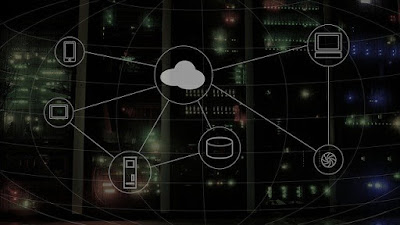Although their functions are totally different, they can be used alongside each other quite effectively. Using one does not obstruct the use of other. However the solution provided by each of them varies significantly. By knowing the differences separately you easily select the right one for your business.
In this article, I will be mentioning about Cloud Computing Vs Edge Computing | 5 Differences between Cloud computing and Edge computing. Finally from this post you will know which is the better computer service.
Let's get started,
1. Data Processing
In Cloud computing the data processing takes place on the central cloud server such as Amazon E2C instances. This central cloud server is usually kept away from the source of information.
While in Edge computing, the data is processed on the device where the sensors are connected directly or it can happen in any gateway device that is kept in close proximity to the sensor.
2. Processing Power
The processing power and the technological capabilities of cloud computing are significantly greater compared to an edge computing. This also means that the cloud computing is capable of storing more information. This is due to the operations that is performed on the device itself in the Edge computing.
3. Speed
Both the Cloud and Edge are interconnected to each other. Which means that the data transfer cannot take place if one of them are not present. In Cloud computing infrastructure, the edge devices receive information and transfer it to the clouds. All of the main portions of the data processing and analysis occur at the cloud. Edge only has to do a limited role. However there are some instances where applications need to have greater response time. In here, Edge removes latency in order for achieving real time responses.
4. Bandwidth
The cloud computing relies on your internet connected all the time. All the datas of the user are present on the local servers. Without an network connection there will be no access given to these files. This can severely impact the bandwidth usages. Especially in the instances where there are live feeds.
In Edge computing infrastructure, there are very less number of data transmissions. In here most of the heavy works (processing) are done at the Edge. Only the left overs are sent to the cloud. This can result in reduced data transmission bandwidths.
5. Scale
In cloud computing when you add more devices there will be more load on the centralized server. Every additional device will require a cloud computing power. Due to this there can be bandwidth bottlenecks.
However in Edge computing architecture, whenever you add a device only the unit cost per device increases. There will be no bandwidth shortages or cloud computing requirements since the processing is done at the edge itself. As a result edge computing is more scalable.










No comments:
Post a Comment